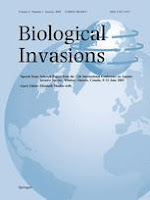The Science Now blog, part of Science magazine, has a nice slideshow of animals that undergo parthenogenesis. Marmorkrebs appear as entry number five out of eight. The caption reads:
The parthenogenetic form of the North American crayfish Procambarus fallax, marmorkrebs are a popular aquarium pet. Their capacity for virgin birth was first discovered in Germany in 2003, when aquarium owners noticed that crayfish housed alone were laying eggs that developed into healthy adults. Genetic analysis and laboratory experiments confirmed that the animals were reproducing through parthenogenesis. Ecologists worry that their accidental release into the wild could seriously harm native crayfish, because a single individual can start a self-sustaining population, leading some states to prohibit their ownership.
“Some states” is currently a bit of an overestimate, since that number is, as far as I know, one.
Check out the other seven entries here.








